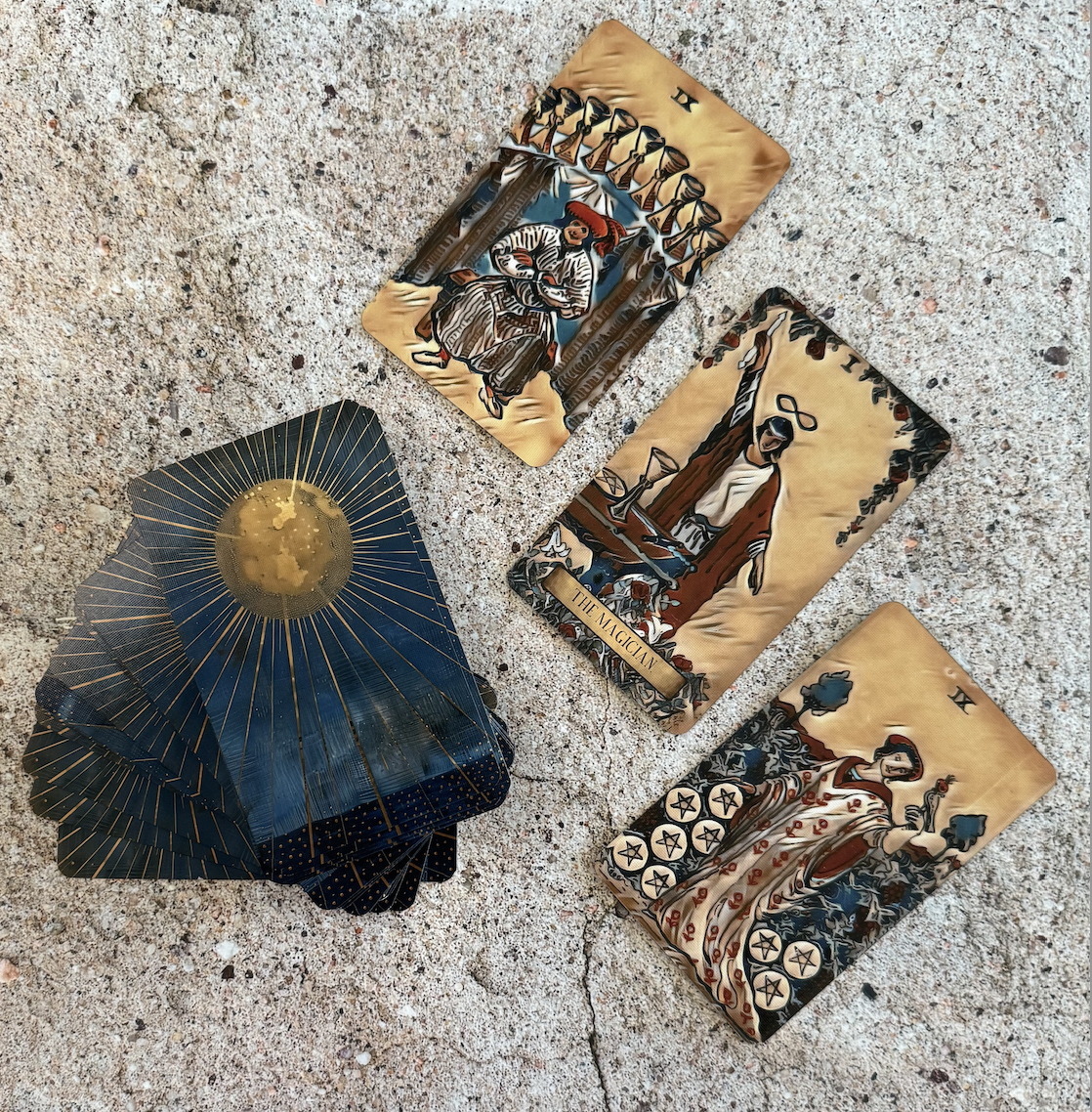
Doing a tarot reading for yourself can be an empowering way to gain insight, clarity, and direction in your life. But if you're new to tarot, it’s normal to feel a little unsure about how to interpret the cards when you’re both the reader andthe seeker. In this guide, you’ll learn a simple step-by-step process to confidently read tarot for yourself—even as a beginner.
Step 1: Set Your Intention
Before you shuffle your deck, take a moment to center yourself. You can light a candle, take a few deep breaths, or meditate briefly. Focus on the energy you want to bring into the reading.
Ask yourself:
-
What do I need clarity on?
-
What am I feeling unsure or curious about?
Tip: Ask open-ended questions like:
-
“What energy surrounds this situation?”
-
“What lesson am I being asked to learn?”
-
“What’s the next best step forward?”
Step 2: Choose the Right Tarot Spread
If you’re just starting out, keep it simple. Here are two easy tarot spreads for self-readings:
1. One-Card Pull
Perfect for daily insight or a quick check-in.
-
Ask your question.
-
Pull one card.
-
Reflect on the message.
2. Three-Card Spread
A classic for deeper readings.
-
Card 1 – Past or root cause
-
Card 2 – Present or current energy
-
Card 3 – Future or potential outcome
Other variations:
-
Mind / Body / Spirit
-
Situation / Challenge / Advice
Step 3: Shuffle and Draw Your Cards
Shuffle the cards however you like—overhand, riffle, or simply mixing them on a flat surface. Focus on your question as you shuffle. Stop when you feel ready and draw your cards.
You can either:
-
Pull from the top
-
Fan them out and intuitively choose
-
Let one "jump" out
Step 4: Interpret the Cards
Now it’s time to interpret. You can reference a tarot guidebook or use your own intuitive impressions.
Ask yourself:
-
What symbols stand out to me?
-
How does this card make me feel?
-
How does it relate to my question?
Look at the colors, expressions, and movement in the card. Consider both the upright and reversed meanings if you choose to read reversals.
Example:
If you ask, “What do I need to focus on this week?” and draw The Hermit, the message might be to spend more time in reflection, journaling, or pulling back from distractions.
Step 5: Record Your Reading
Keep a tarot journal to document:
-
The date
-
Your question
-
Cards drawn
-
Keywords and impressions
-
Any personal insights or outcomes
Over time, you’ll start to see patterns and build your own understanding of the cards.
Step 6: Reflect and Act
The goal of a self-reading is insight, not prediction. Use your reading as a mirror—not a map set in stone. Ask:
-
What lesson is this showing me?
-
What’s one small action I can take today?
Tarot is a tool for empowerment, not dependency. Let it guide your inner wisdom, not override it.
Common Mistakes to Avoid
-
Reading when emotionally overwhelmed – Take a break if you’re too anxious to interpret clearly.
-
Asking the same question over and over – Trust the first answer.
-
Expecting “yes/no” clarity – Tarot is about nuance and guidance.
Final Thoughts
Reading tarot for yourself is like having a heart-to-heart conversation with your higher self. The more you practice, the more fluent you become in the language of the cards. Be gentle, curious, and open—and you’ll be amazed at the insight that comes through.
Recommended Tools:
-
📓 A dedicated tarot journal or notebook











